Blogs
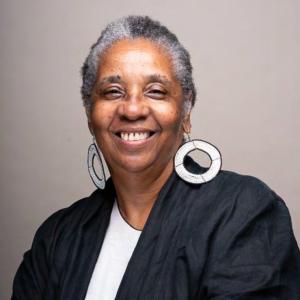
Part Two: Ritual Extends the Depth of Our Imagination. Ritual takes the familiar and enlivens it with our imagination. Consider it this way, you have a favorite dance or song or prayer. The reason we can dance it, sing it, pray it, again and again is that each time our ingenuity takes the work to another dimension. Each time we feel, express, and see something new that we did not experience before. It is this aspect of ritual that makes it meaningful and alive and different from a routine. Each time we engage in ritual it comes alive with the genius of our imagination. Ritual can even begin in our imagination and blossom through its application. We imagine a portal, a doorway in liminal spaces and to our delight, the ritual affords the opportunity to be in liminality and create. So, during the ritual there may be revelation, illumination and even inspiration that touches our spirit so that it becomes real. The ritual has moved from a familiar intent, or action, to the manifestation of our imagining. With practice, we become fluid in ritual making and always expect our imagination to do what it does. In this way, ritual maintains the integrity of being in the present while reaching into the unseen (imagination). Because we are intentional in ritual, it also creates a kind of authority to dreaming and imagining. Ritual helps to declare that what we dream, what we imagine, is as much a part of our collective covenant in Spirit as the faith we have in our Creator and Ancestors working on our behalf. So, do ritual; do ritual to imagine deeply!
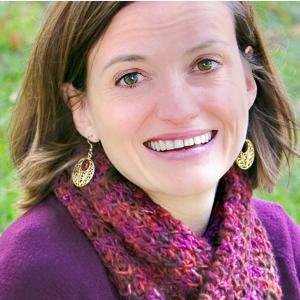
“So, if anyone tells you to go to hell,” I say to my students, “you can say, ‘that’s fine—because Jesus has already been there, so I won’t be alone.’” When I started teaching theology at Columbia Seminary nearly twenty years ago, nobody told me that I needed to talk about hell. And for many years I barely mentioned it. In my own formation, from Sunday school through doctoral studies, the threat of hell had been either a quaint theological fragment of an earlier era, or a harmful piece of proclamation from Other Christians. It was not a pressing concern of the contemporary theologians I engaged, and it was not even a major topic for classical theologians like John Calvin. Like James Cone, I was more concerned about living conditions that might be called “hell on earth” than about any future state of punishment. The one place I did address hell was in connection with Jesus’ “descent into hell” (as affirmed in the Apostles’ Creed). Students wondered what in the world this might mean. It regularly prompted discussions between students who were familiar with this line and those whose churches had deleted it. “Do you ‘descend into hell’?” I began to ask my classes early on when we came to the topic. Students tended to have strong opinions. Ruminations on the presence or absence of hell in the creed led me to discover startling good news in this affirmation, in two ways: To say that the human Jesus of Nazareth experienced not only physical death, but the fullness of spiritual alienation from God—and to affirm that this same human is also one with God—is to affirm that God in Jesus somehow enters the depth of human suffering. There is nothing in human experience, not even hell, that is bereft of the presence of God. It’s Romans 8:38-39 all over again. The descent into hell is not the final word. As the ancient image of the “harrowing of hell” and the common Orthodox anastasis icon portrays it, Jesus descends into hell and then draws up those who are dead into new life. Those in Hades are now joined with Christ in resurrection. I would not have reached this recognition of the good news of Jesus’ descent into hell without following the questions of students. But for many years, this is all I said about hell in Theology 1 and 2. That changed recently, as students began to ask new questions. A couple of years ago, toward the end of the second semester of theology, my co-teacher Tim Hartman and I were talking about Christian faith in a world of religious diversity, and several students were troubled. “We have been taught our whole lives that if you do not accept Jesus Christ and confess him as savior, you are going to hell,” they noted. “Why have we not talked about hell all year?” Tim and I paused. When our classroom had been majority white, I had avoided this topic because I did not think it was important—and no one had questioned that choice. Now that our classroom includes a majority of students from communities that have been minoritized because of race or sexuality (or both), the question resounds differently. We decided to make a change. This year, we added some readings about hell in connection with our discussion of salvation. Engaging this conversation directly enabled students to interrogate what they meant by this term, and how it was related to the gospel. Is “salvation” solely an individual matter, as popular visions of hell seem to suggest? Or is it communal, concerned for the well-being of all people and the whole world? Are heaven and hell actual locations, and if so, what does that mean? What does “hell” suggest about the relation of bodies and souls—are we talking about “souls” going somewhere after death? Focusing on hell also enabled us to wrestle afresh with Calvin’s doctrine of double predestination, in which eternal damnation is not the main point, but is a logical consequence of God’s eternal decree. Not many people (including me) wanted to defend Calvin on this point, but how does hell acknowledge the reality of God’s righteousness, and the significance of human responsibility? And finally, how has teaching about hell functioned in our churches, particularly in ways that harm people who do not conform to social norms? When we followed our students’ questions and made room for conversation about hell, it defused the concerns about its absence. Hell, actually became a fruitful part of a larger whole. So, here’s the takeaway: Following the surprising questions of students, even into hell, led to my own deeper discovery of the good news of a topic that I had previously avoided. How might attention to other student questions similarly open new vistas of discovery in the theology classroom?
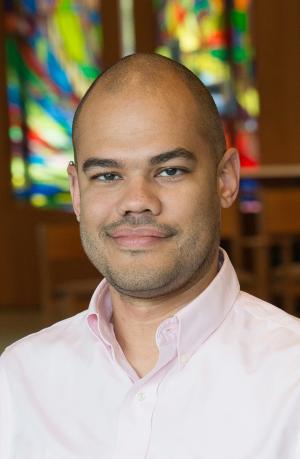
Before March 2020, the seminary where I teach didn’t do much in the way of remote learning. Like many educators, my colleagues and I found ourselves rushing to take our teaching online at the same time that many of our students were taking courses remotely for the first time. My colleagues and I found this new mode of teaching terribly awkward. Most of them found that awkwardness frustrating. Not me, though. I was gifted from childhood with a certain awkwardness. It’s cozy. Still, the awkwardness of remote learning wasn’t the only concern being raised in faculty meetings, especially as we were discerning the extent to which we would offer remote learning going forward. That awkwardness was increasingly framed as the consequence of a claim that had more weight behind it in conversations about theological education: that remote learning was disembodied. It seems obvious. When teachers and students aren’t in the same space, but instead find our interactions mediated by a screen and who knows how many miles of cables or electromagnetic waves of various sorts, our teaching and learning are necessarily disembodied. We lose the nonverbal feedback on which we so often rely in conversation. The flow of our class discussions becomes awkward, either with one person talking over another or with everyone raising their virtual or physical hands and waiting just a little too long to be called on. It is difficult to keep students’ attention for hours on end if we aren’t physically in person, and it’s hard to foster that sense of classroom community that often grows over the course of a term. It seems obvious that remote learning is necessarily disembodied learning… but that’s not actually the case. Everything we do, we do as creatures of flesh and blood, pain and pleasure, energy and fatigue. When our teaching and learning aren’t practiced in a shared physical space, they are nonetheless practiced in physical spaces that meaningfully impact our learning, in bodies that each have their own mix of needs and abilities. Our reception, processing, and expression of ideas are embodied processes, wherever our bodies happen to be in relation to one another. Intellectual, emotional, and spiritual engagement with teaching and learning happens within and between bodies. Remote learning is not necessarily disembodied. It just turns out that teaching techniques designed to harness one form of embodiment don’t always translate well to a significantly different form of embodiment. If we can accept that no teaching and learning are necessarily disembodied, but that they must be embodied differently, it is possible to turn what feels like disembodied teaching and learning into teaching and learning that are embodied in particularly meaningful ways. For those who—like me—continue to wonder just what it means to engage in embodied teaching at a distance, I offer three suggestions: Let go of the need for controlled learning environments in favor of precisely the kind of adaptability students will need in their own work. Consider how you might model and promote such adaptability in your teaching. Reflect on the value of people working in their everyday spaces (e.g., offices, homes), rather than the constructed space of the in-person classroom. Discern how you might invite people to treat their everyday spaces as spaces for learning just as they are, rather than as something out of which learning space must be carved. Re-commit to the truth that being embodied together in ways that promote rich learning—marked by equity no less than serious intellectual engagement—requires intentional practices of community formation, whether we’re in the same physical space or at a distance.
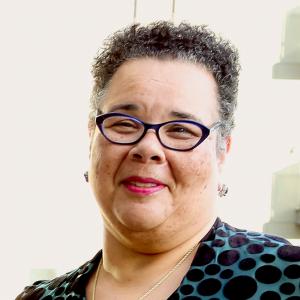
In junior high school, we were taught that all the sections of any assigned book were to be read. We were instructed that “good students” never overlook any section of the book. This point was reinforced when the answers to a few critical test questions came from the preface and introductory sections of the text. Most students, having overlooked those sections, missed the questions – thus forfeiting a grade of “A.” We learned, from this punitive experience, that all the sections of all the books were fair game. As I have learned to teach, I too have been interested in my adult learners taking notice of and appreciating the entire text – all the sections. While I am not interested in posing obscure questions on tests, I am interested in students getting in touch with all that any book has to offer. Authors take quite seriously the writing of the sections which come before the principal content. For many writers, much time and great effort is spent in the pages which precede the content. Writers are hoping that the front matter invites the reader into their work. From a publisher’s perspective, books are generally divided into three sections: front matter, principal text, and back matter. The front matter is the material at the front of the book that usually offers information about the book, about the author, about the author’s intent, and about the presumed audience. The front matter is not the principal text, but the “get ready” information for the principal text. The front matter is the author’s opportunity to set the tone for the readers’ experience. Reading the front matter is like watching the beginning ten to twelve minutes of a film. In these opening scenes, the film maker is establishing the pretext of the storyline with images, sounds, pace and rhythm to pique the viewers’ interest. Or the front matter is like the moments of boarding a roller coaster ride. It is like when we are being harnessed-in, then the thrill of the ever-so slow trip up the steep incline. Creating anticipation of the ride is what the front matter is about. In many of my courses, I would guide my students in lingering over the front matter. I wanted my students to have their appetites whetted. I wanted their anticipation to be heightened. During class sessions I would, with my students, review the provided front matter sections. I would rehearse all the sections: Copyright page, Dedication, Epigraph, Table of Contents, Foreword, Preface, Acknowledgements, Introduction – any pre-sections which the author had provided. Please know that as I am extolling the virtue of and necessity of front matter, I am not saying that the back matter should be overlooked or disregarded. The footnotes, endnotes, appendix, bibliography, and the index, are important. My experience is that students, when needed, find their way to those tools provided in the back matter. It is the tools of the front matter that I think need support for our students’ improved reading habits. As I reviewed the front matter with students, I would make sure they knew how to decipher the codes of the Copyright page (for many, this was their first experience knowing this code). I would call their attention to the Dedication as it usually provided a personal and loving note from the author. We would read the Epigraph and discuss whether the author was providing a summary, a counterexample, or was juxtaposing their work with a wider literary canon. I would ask – “To what is the author inviting the reader?” I would point out that the typeset design of the Table of Contents is meant to communicate as much as the listing of the chapter titles. “Read the design as much as you read the words,” I would say. We would read aloud the Forward, Preface, and Introduction then invite the students to compare-and-contrast the three sections. I would remind them that the author has free-range concerning the role, responsibility, and weight of each of these sections and each author decides how these sections will function as preliminary for the reading of the text. I would suggest that these sections tell us something important about how the author is thinking, and I would ask them to speculate or extrapolate what the author is promising. Sometimes, I would break the class into small groups to read and report back the role of each section or to report back a comparison of all sections. Finally, I would say – “We have saved the best for last!” The best way to understand the motivation of an author, the way to see into the author’s soul, is to read the Acknowledgements. Writing about an author’s gratitude is to write about one’s own heart. Acknowledgements provide glimpses into the writer’s process, and likely, insight into the writer’s project which, invariably, is bigger than the book at-hand. Some groups, by the end of the semester, began to ascertain that – for some authors - the promised book in the front matter was not the book in principal content. With these observations, I knew they had become better readers. Once students develop better reading habits they become better learners, better thinkers, and more able to understand the complexities and curiosities of other people as well as their own people. I discovered that taking time to teach adult students good reading habits is time well spent – for me and for them.
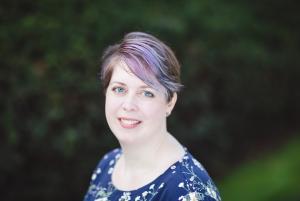
…and they had the best class ever. I was honestly surprised I made it a whole month into the semester before getting sick, what with a preschooler at home. Much of the time, despite everything we should have learned from COVID, I strap on a mask and go teach anyway – but this time, my voice was gone and I felt like I’d been hit by a truck. I had to cancel classes. At least, I thought I did. My introductory course wasn’t going to happen, but what about my majors- and minors-only seminar? It was a new course, filled with mature students I had invited to study theology more deeply, and the whole point was that it was discussion-based. They could do that without me, couldn’t they? It was a wild morning – I decided to NOT cancel the seminar, but wanted to be sure I shaped the space and had some accountability for it, so I spent all the moments in my doctor’s waiting room typing out ideas on my phone. Before the class met, I had a structure ready. A colleague was going to go “start” the class for me by reading our weekly Alice Walker poem and handing out materials; students would have worksheets and assigned groups for a critical reading activity where they examined our text (a passage from Teresa of Avila) for aspects they thought were relatable and useful, or irrelevant and unhelpful. I also gave all twelve students a task for the day – everything from timekeeper to worksheet distributor, discussion leader to careful note-taker, and clock-watcher to pacing/energy manager. About half of them were told to send me materials as soon as class ended – pictures of their notes, or the sheets they filled out, even just emails to tell me how things went. After that, all I could do was sit at home in my robe with a hot cup of tea, and wait. The emails started trickling in about an hour after class was due to end. “Everything went really well!” one adult student gushed. “We stayed the whole time!” (I had explicitly told them it was okay if they decided to finish up early). When I saw notes and the filled-out worksheets, I was a bit startled at how detailed everything was. Despite not hearing the discussion, I could get the flavor of it – long story short, my students don’t like it when women writers in spirituality are self-deprecating, and they were annoyed that Teresa of Avila kept undercutting her own authority by calling herself a “mere woman” (fair enough, blossoming feminist theologians). By the time I was back on campus and started running into students from that class, it became clear that they’d had an unexpectedly delightful time. “We were so nervous!” it always started out, “But once we got going, everybody was really engaged!” By the time we met again a week later, I was confident in opening class by saying, “So what do you want to talk about?” while I sat back and ate crackers from a missed lunch. There was some hemming and hawing, but after a minute or two, they launched into the topic of the week. I almost felt unnecessary. Aside from tremendous pride in my students, the biggest lesson I took away from this unorthodox day of teaching was to get out of my own way. It doesn’t seem like a hard lesson, except that I’ve spent all my years at this institution pushing in exactly the opposite direction. The students who show up in my introductory courses are predominantly anxious – most have never studied religion before and are fearful of the difficulty of the course. One of the ways I help them feel more confident is by tightly controlling the space and making the boundaries and parameters clear – you will be in small groups for this many minutes, have one answer to share about that question, etc. When they know what I expect of them, they relax, and we have better interactions overall. It’s not quite the open forum that I loved in many of my favorite undergraduate courses – the ones that started with “well, what did you think of the readings?” and went from there – but it’s appropriate to the situation, and it works. I knew it might be a little tricky to switch out of that mode for my seminar class, but I had underestimated how intentional I would need to be to not take over the room. It turns out that not being in the room in the first place was the hard reset I needed. I was still present in the ways that I shaped the space and crafted the reflective forms of learning, but students didn’t need my voice to be so loud when they were still learning how to amplify their own. I’m still early enough in my teaching career that it’s helpful to have reminders that I’m not growing into just one type of professor; I’m growing into being several types of teacher that I can pull out when I’m in the appropriate context. This semester, I’m going to aim to enjoy both the courses that I carefully control, and the one where I should be more of a fly on the wall. And in the future, I might strategically abandon my students a little more often, just to see what they can do without me.

In 1850, Harriet Beecher Stowe began writing a story about slavery. Stowe’s father, Lyman Beecher, was a pastor of Presbyterian and Congregational congregations in New York and Connecticut before moving with his family to Cincinnati, Ohio, to serve as president of Lane Seminary, a Presbyterian institution, in 1832. As a young adult, Stowe attended a series of debates on abolition, colonization, and slavery at the seminary. These debates in 1834 stirred the fires of abolitionism among many of the students, which agitated the board of trustees, and Stowe’s father sought a compromise between the students seeking to be bolder and more strategic in their activism and the trustees urging the school to focus on theological subjects and training future clergy for pastoral leadership. Ultimately, fifty-one students decided to withdraw from the seminary. They published a statement protesting the institutional leadership of both the trustees and Beecher. The students detested institutional attempts to censor their activism on campus and accused the school’s leaders of cowardice and betraying the call of Jesus Christ: “Are our theological seminaries to be awed into silence upon the great questions of human duty? Are they to be bribed over to the interests of an unholy public sentiment, by promises of patronage or threats of its withdrawal?” Stowe’s literary career began to flourish around the same time as she began publishing many essays in various periodicals, but she returned to the topics discussed at Lane for her most famous and influential work, Uncle Tom’s Cabin, which was first published in serial form in an abolitionist newspaper in 1851, and then in book form the following year. I presently teach at a different Presbyterian seminary in Decatur, Georgia. Though hundreds of miles and almost two centuries separate Columbia Seminary in 2023 from Lane Seminary in 1834, I believe the searing questions from the students departing Lane are hauntingly relevant at Columbia and other seminaries. Many of the conversations among faculty and administrators at Columbia are about the future of theological education. We talk about the promises and perils of online education, the joys and challenges of teaching multi-vocational students, and the pros and cons of reducing credit hours in certain degree programs. These are rich and necessary dialogues, but I also know that we are not addressing all of the “great questions of human duty.” I can’t help but feel that the busyness of strategic planning, with its accompanying committee meetings, listening sessions, bar graphs, and pie charts, has awed us into silence on Columbia’s historic sins and reparative justice. On June 15, 2020, the board of trustees and president’s council of Columbia issued a statement that entailed a “commitment to repair the breach.” Columbia’s leadership confessed that the seminary “came into being in the context of and participated in the subjugation and oppression of Black people.” This is an important acknowledgement of Columbia’s sinful past. But confession also requires addressing the totality of wrongdoing that lies at the foundational roots of the seminary. In 1834, six years after its founding and three years after its first classes, Columbia received $3,603.25 in its endowment from the sale of eighteen enslaved African Americans. Charles C. Jones, a white member of Columbia’s board who joined the faculty one year later, inherited four enslaved persons, a young woman named Cora and her three children, from Andrew Maybank, a white plantation owner in Liberty County, Georgia. In his will, Maybank also instructed Jones to sell fourteen of his other enslaved persons, with the proceeds directed to Columbia Seminary. Jones sold Cora and her three children in a private sale for $1,000. He also arranged for the other fourteen enslaved persons to be sold in a public auction for $2,603.25. This is but one of numerous instances in which money derived from the sale of enslaved persons flowed into Columbia’s endowment. In 1845, a journal published by the Associate Reformed Synod of the West excoriated Columbia for benefiting from a public auction of enslaved persons. The journal found it tragic to see human beings—“the following negro slaves, to wit: Charles, Peggy, Antonett, Davy, September, Maria, Jenny, and Isaac”—listed as property akin to animals, lands, and other capital in a local Savannah newspaper. But it was especially infuriated to behold a Presbyterian seminary in the listing as the recipient of the funds derived from the sale. The journal criticized the lack of shame or remorse from the seminary as “scandalous.” Columbia’s commitment to racial repair includes new scholarships that cover the entire cost of tuition and fees for every admitted African American student. As I have shared in an earlier reflection, I am exceedingly grateful to teach at a seminary that has the financial resources to support the students in my classroom. But there is one glaring omission in Columbia’s efforts to repair the breach: The absence of reparations to Cora’s descendants and the descendants of other enslaved persons who were sold to enrich the seminary’s endowment. In 2019, Virginia Theological Seminary designated 1.7 million dollars as a reparations endowment fund to identify and pay the descendants of Black persons who labored on its campus during slavery, Reconstruction, and Jim Crow segregation. Three years later, the seminary reported that this fund increased to 2.2 million dollars and nearly 200 descendants had received payments. Virginia Seminary’s work toward reparative justice is simultaneously a model and an indictment of theological education. Surely it is not the only theological school that must atone for its historic sins of slavery and racial oppression. Both Columbia and Virginia are among the wealthiest theological institutions in the nation. In 2022, one magazine published a list with the ten schools holding the largest endowments: Princeton Seminary ($1.45 billion), Harvard Divinity School ($845 million), Yale Divinity School ($597 billion), Candler School of Theology ($352 million), Duke Divinity School ($291 million), Columbia Seminary ($284 million), Vanderbilt Divinity School ($277 million), Pittsburgh Seminary ($262 million), Perkins School of Theology ($248 million), and Virginia Seminary ($215 million). One question I sometimes encounter revolves around how institutions can make amends for injustices that happened so long ago. I often respond with an observation and a question. I recognize that many years have passed, and we have certainly witnessed some progress in the pursuit of racial justice. I then ask when a specific institution made things right and repaired relations with the families and descendants of the people it directly harmed. In the case of Columbia, the answer is not yet. There is much excitement about Columbia’s future with a desire to boldly step into the future of theological education with renewed purpose and new vision. But before revival there must be a reckoning.
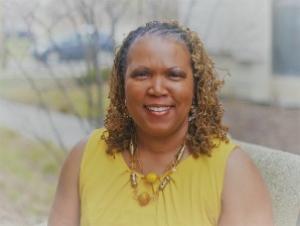
There is a setting on Zoom which allows participants to blur their background. The individual is fully aware of the personal home, office, car, or other location. However, viewers on the Zoom line, if you will, have to guess or surmise the place behind the face. I know where I am. You are left to nebulously wonder. As professors we show up in the classroom, whether on campus or online, fully aware of how we are feeling. There are joys that call for jubilation and heartaches which weigh heavily. We know. We try to prevent our students from knowing. For the sake of pedagogical performance, we attempt to hide those morose monuments. In our teaching we make valiant strides to blur the burdens beckoning us back to bed. So that the language of hermeneutics, theology, religious studies, sociology, ethics, and pastoral care and counseling carry the day, we mute our emotions. There is a tendency to show up poised and put together when in reality we are a puddle of tears. We dare not permit a clear screen of pain and anguish. Thus, through an obscure framing we don a mask of dis-ease and discomfort. Since the onset of what is now the endemic presence of COVID-19, teaching has had to muddle through communal conundrum and global grief. I dare not aver that there was not such widespread distress before the pandemic: #BlackLivesMatter, #MeToo, the Civil Rights Movement, the Cold War, the Rwanda Crises, the HIV/AIDs epidemic, earthquakes in Haiti, and the Spanish Flu, to name a few, were all large scale crises that did not escape classroom discussions. These watershed moments continue to shape course content. Ours is an ancestry of crisis pedagogy with the purpose of trying to create progeny change agents. We cut our teeth on teaching while grieving. Recent events continue to prove fodder for our goals to mold social activists, social catalysts, justice leaders, pastors, counselors, and professors. Another mass shooting in the United States, a war in Ukraine, deadly earthquake decimation and demise in Turkey and Syria, and more deaths from COVID-19 appear antithetical to what we are trying to accomplish in the classroom. Ours is the task of nurturing persons who will love mercy, do justice, and walk humbly when it seems that yes, the world is going to hell in a handbasket. And yet, we continue to teach. #WePersist. A macrocosmic lens gives broad strokes. These we cannot blur, per se. However, the microcosmic, personal matters we want to keep at arm’s length. Ours is not the tendency to announce to our students news of a tenure and promotion denial or an article rejection. We swallow the agony of being an empty nester longing for our children as advisees demand the care we’ve reserved for our loved ones. Professors and administrators have struggled to be there for students when members of their own families died, lost jobs, and became ill due to COVID-19. This is the blurring. So what do we do? This was not meant to be a doom and gloom, woe-is-me writing exercise. I would like to encourage us, encourage me, to be more transparent. Imagine showing up in the classroom and honestly telling your students, “I am not okay today.” A statement of “I am struggling” from a professor could free classroom colleagues to relax, relate, and release. I am not saying everything needs to be shared, nor all the time. I also realize the potential maternal repercussions if I, a Black, cisgender, female professor, dare to be vulnerable. However, instead of blurring the background, how about allowing our emotional and tender forefronts to boldly manifest. In freeing ourselves, our classrooms can become a means to liberate our students. Our teaching task is to model the humanity of the profession. We do ourselves and our students a disservice when we obfuscate our dejection and obscure our despondency. I would posit that our mental health and wellness depend on our willingness to safely, openly unloose our stammering tongue. Teaching while grieving can make for fertile pedagogical ground. We grieve because we love. We grieve because we have lost what we love. May we honor the teaching, what we learn from grieving.
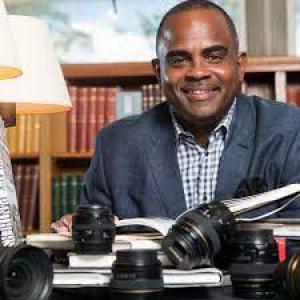
On March 1st, the Wabash Center released a new volume of its Journal on Teaching centered on the theme of "Changing Scholarship." The issue features a multi-media essay called, "The Mother of Teaching, Ms. Earlene Watkins: A Real Mother for Ya," by Dr. Ralph Basui Watkins. The piece explores how Watkins' mother modeled for him a transformative, holistic approach to teaching. Accompanying the essay is a playlist on Spotify: Click Here to Listen. Below, Watkins walks us through his song choices and how he cultivated the soundtrack for his recent contribution to JoT.
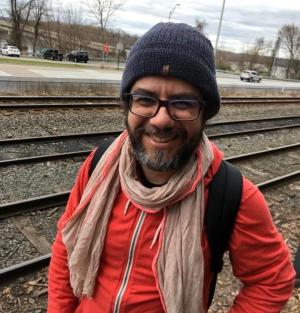
This semester I am on sabbatical and I decided to shift some gears in my scholarship. I have depended so much on a certain scholarship for my teaching that I feel now another world is opening for me. Since I opened myself to a different relationship with the earth, one of allowing myself to be affected by it, so many things are happening to me. I have always been eager to know everything I can learn about what I hear, touch, and see. My library is way too big and what could have been my retirement is now composed of shelves packed with books. For a few years there has been something growing in me that tells me to slow down that eagerness and sheer desperation. A while ago I lost 1,600 computer files with all my texts, books, scholarship, research, which was devastating. I was thrown into a place of fear, grief, anger, and loss. I felt like I had nothing to rely on. After a long period of reflection, I now wonder if it was my own unconscious telling me: enough with that, that eagerness, that desperation to know. I started pondering my reasons for hiding under those unfulfilled desires. Was I trying to cover up everything that I actually don’t know and am so afraid people will discover about me? What was this desperate need to try to know everything? I am still wrestling with it. And let me say, books haven’t stopped arriving. But now that I am trying to figure out how to pay attention to the earth, I have more to learn and more to read and have to pay attention differently. There is something in me now that is closer to joy than obligation when I read, when I research, when I teach. As I move closer to the earth, I am trying to do what the Brazilian song says: “Caress the earth, know the desires of the earth.” As I do this I am getting closer to myself and whole new worlds are opening up. And that means other ways of learning, teaching, relating. As I learn with indigenous people that the earth is always inhabited by doubles and multiples and other natural and social relationships, I am discovering the joy of my symbiotic being and keep pondering what it means to live in these forms of world relations. My spirituality, always so much dependent on modern forms of thinking, is now becoming freer, as I search for untapped forms of my own traditions and other wisdoms and ways of being. I feel I need to know the world through my belly button, through my intuition, through my perception, but how do I do that? This discovery is pushing me to a world of feelings and sensations, experiences and knowing, that are pretty much anathema for proper scholarship. But I am allowing myself to feel with other beings in ways that I never allowed myself to do and be before. I am gaining the company of other thinkers: other theologians, artists, anthropologists, biologists, geologists, and indigenous thinkers guide me. It was during COVID-19 that the idea of a play came to me. It started with a visitation from my father who was a fantastic artist with a combination of many gifts: a musician, a clown, a theater actor, a song writer, a movie buff, an inventor of games, a poet. During my daily walks I felt his presence. He came to me as a clown and a question started to circulate in my head and my body: How can we engage climate catastrophe, devastation, and grief using humor and laughter? What if a clown walked around the earth figuring out its disasters, sadness, and losses and responded like a clown with naiveté, stupidity, awkwardness, lightness, and humor? Since then, the idea of a play has stayed with me. I have written a script and am looking for funds. But how do we raise funds when all we know in academia is about writing books, editing books, articles, journals, and so forth? Furthermore, the word “clown” is a red nose, oops, a red flag to any serious scholarship. I tried applying for scholarships from the usual places I know to no avail. They all look for innovative thinking, but let us be honest, even the word innovative has limits. Clowning? Really? A friend who proofread my proposal asked, “Do you really need to use the word ‘clown’?” It was a great question and I laughed. Fundraising seeming hopeless, I started to save money. I asked my school for help, and I am getting great support which I am so grateful for, and I feel blessed. But this project will need more money and I am trying in every way I can to get some. I decided to include students and created a class on humor, laughter, and performance in order to do this through pedagogical lenses. I will teach this class with a musician and scholar from the Ifá tradition in Brazil. Here is the course proposal: Humor and Laughter: Resilience and Resistance Across Religious Traditions To be able to laugh, be humorous, and silly are tremendous ways to resist, show love/compassion, and affirm life at a time when depression, anger, sadness, climate catastrophes, and disasters of all kinds are piling up. This course focuses on the following resources of world sense: the Russian Christian tradition of the Holy Fool, Indigenous traditions of Coyote, Afrodiasporic oralities present in the sacred Itan of Ifá, and the multiple presences of Exu with the recognition of the coexistence of positive and negative forces. This course is a theoretical-practical introduction to religious humor and laughter through musical improvisation, sound sculpture, dance, and ritual-performance integrating the senses with the environment. The course will end with a collective performance/play called When Pachamama Meets Gaia. This course is taught by religious teachers/performers who have their foundations crossed by the religious traditions of Christianity and Ifá. Now I need to catch up with my own ideas and proposals. The syllabus is on the way but the most difficult thing now is practicing so my clown can come to life. Next time I will say more about the show and the processes of transformation I am having to go through in order to do this.
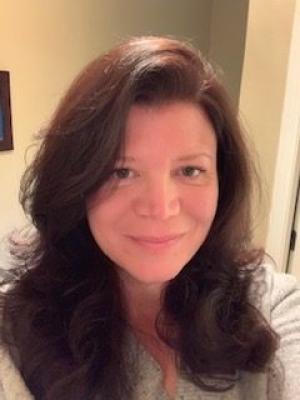
Categories
Write for us
We invite friends and colleagues of the Wabash Center from across North America to contribute periodic blog posts for one of our several blog series.
Contact:
Donald Quist
quistd@wabash.edu
Educational Design Manager, Wabash Center
Most Popular

Are You Okay?
Posted by Nancy Lynne Westfield, Ph.D. on October 1, 2025

On Plagiarism and Feeling Betrayed
Posted by Katherine Turpin on October 27, 2025

Executive Leadership Involves New Questions
Posted by Nancy Lynne Westfield, Ph.D. on December 1, 2025

Embracing the Imposter Within
Posted by Fred Glennon on September 15, 2025
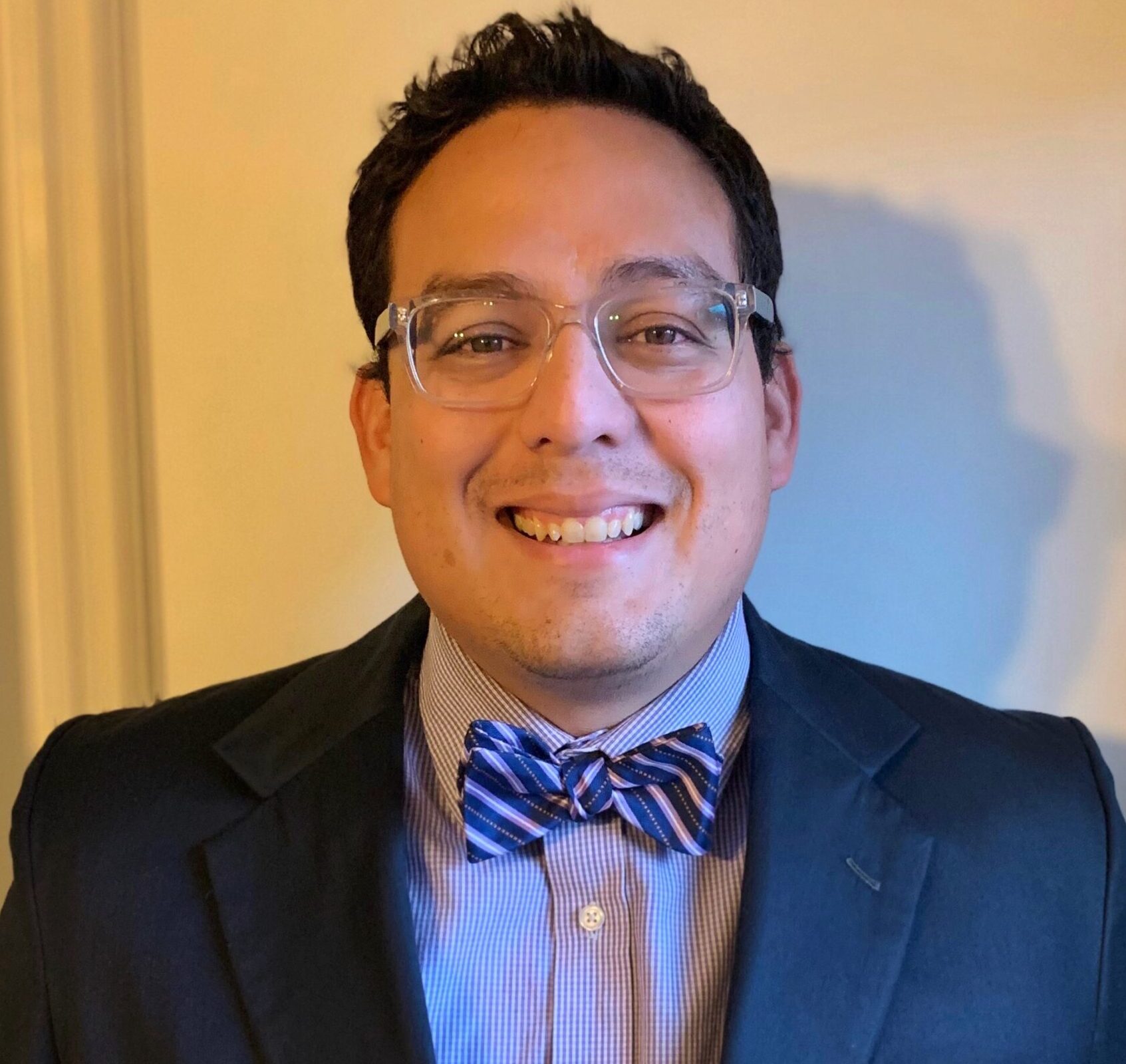
Xenophobia
Posted by Daniel Orlando Álvarez on October 15, 2025